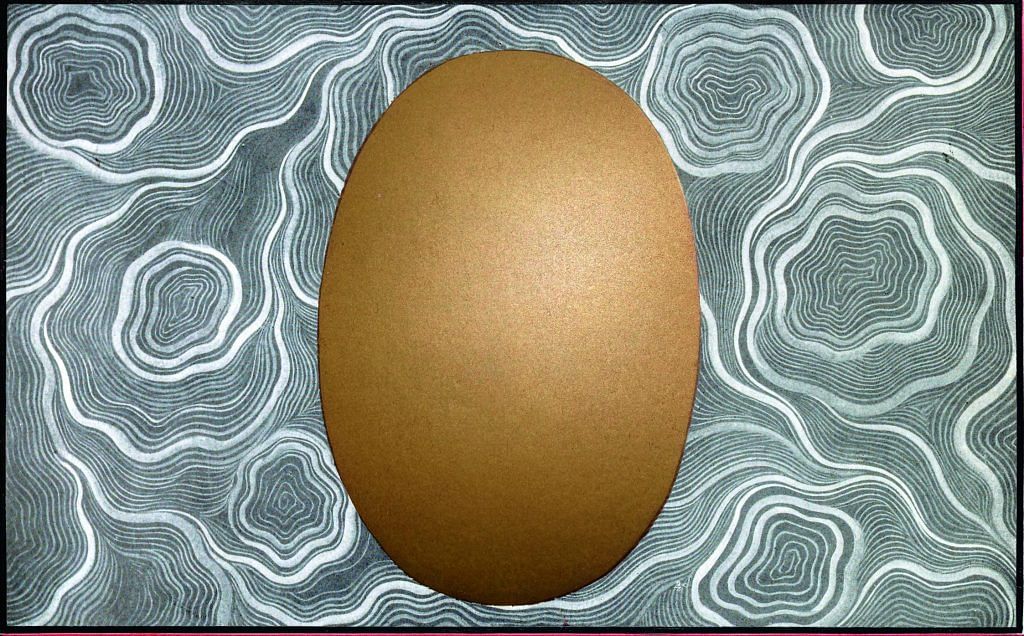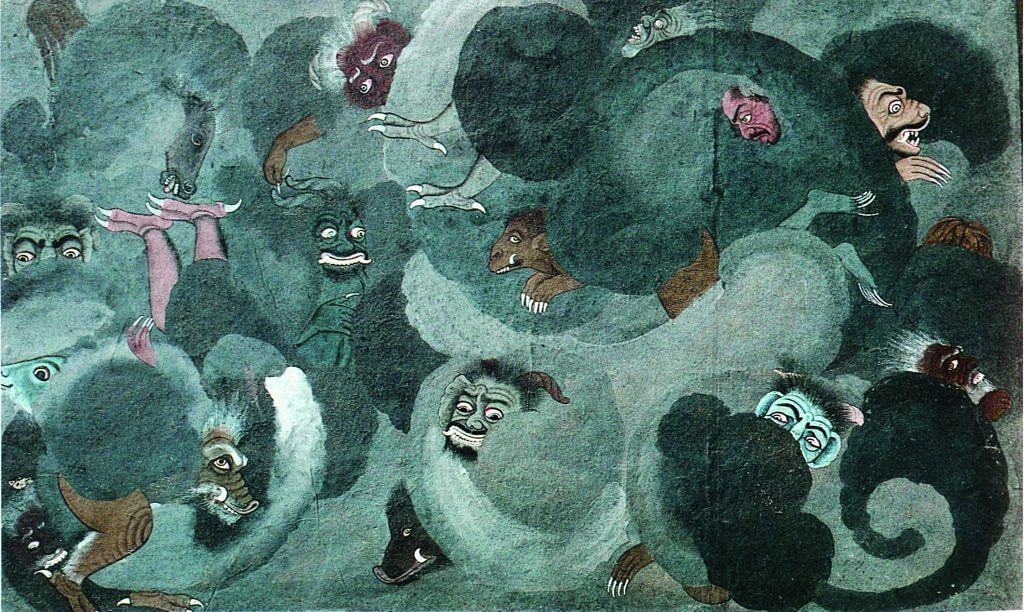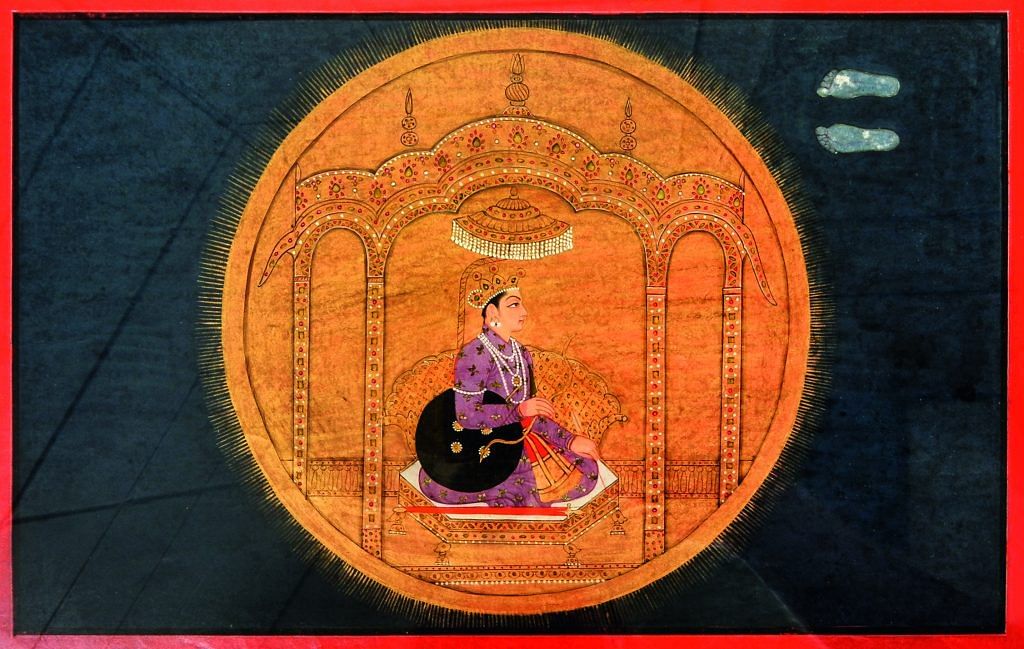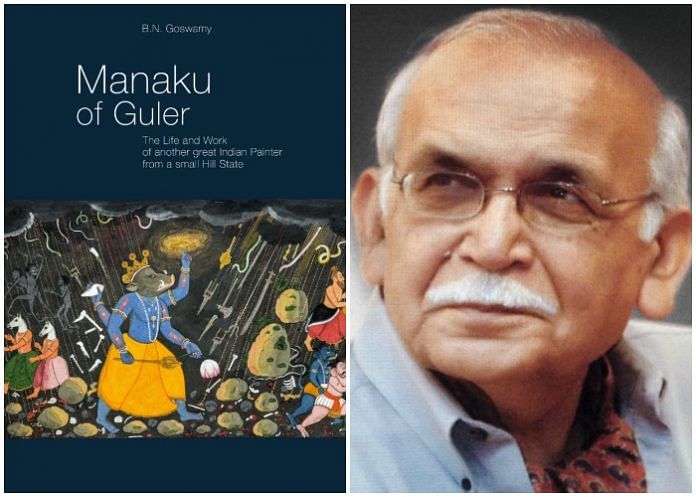Drawing from scarce documents, archives, and works scattered around the world B.N. Goswamy writes about Manaku of Guler, a Pahari painter of formidable talent.
There was an extraordinary efflorescence of miniature painting in the 18th century in the Hill States – the small, mainly Rajput, principalities in the lower Himalayas in today’s Jammu, Uttarakhand, and Himachal Pradesh. Kingdoms not much larger than zamindaris became centres of intense artistic activity; workshop after workshop illustrated poetic texts or events of courtly life through hundreds of the most exquisite paintings.
What accounts for this amazing phenomenon? Was it seeded by artists seeking refuge in the hills from the politically turbulent plains, or by local artists who imbibed something from Mughal workshops but adapted it to a local aesthetic? How did they learn the complicated techniques of miniature painting, and set up supply chains for the specialized materials? What prompted the patrons to invest so much in this very private form of art that remained enclosed in books and did nothing to advertise the power and glory of the king?
Pahari painting has tantalized scholars for a century. While museums and collectors have discovered and acquired an enormous number of these paintings, documentary evidence about the context of their production has remained scarce. In the 1960’s, the art historian B. N. Goswamy made a breakthrough when he combed through the geneaological records kept by pandas in pilgrimage centres in north India and found entries that gave names, dates and locations for some artists.
Since then, he has published a stream of articles and books that have combined this geneaological information with archival records, oral histories and of course the paintings and drawings themselves, which are scattered in museums and private collections across the globe. His Pahari Masters (1992, co-authored with Eberhard Fischer) was a culmination of this research.

Among the artist-families Goswamy was able to reconstruct was the lineage of a “Pandit Seu.” There is no known work signed by him, but his sons and grandsons are among the most celebrated Pahari artists. Twenty years ago Goswamy published the book Nainsukh of Guler, on the younger of Pandit Seu’s sons. Nainsukh’s works combined a jeweller’s exactness with a bold minimalism that knew how to use empty space. His close relationship with his patron, whom he painted in marbled palaces and on the run in exile, added an emotional thread to the tale. These factors had already made Nainsukh the rockstar of Pahari painting. Goswamy’s book catalogued and elegantly introduced all the known works by him, but the most fascinating part of the book lay in its appendices which discussed the sources he had painstakingly gathered over the decades.
Now, to his already formidable oeuvre, B. N. Goswamy adds another volume on a Pahari painter from the 18th century. This time his subject is Nainsukh’s elder brother Manaku. In many ways this book is an even greater achievement than the Nainsukh volume, because documentary sources for Manaku are even more scarce. It is fascinating to watch Goswamy build the edifice of Manaku’s life and work from mere wisps. One portrait sketch with an inscription identifying it as “the likeness of Manaku, Seu’s older son,” one entry in a panda’s bahi, and two inscriptions on paintings attributing them to an artist by this name are the only firm pieces of evidence that Goswamy has at hand.

The one set of paintings that can be firmly attributed to Manaku – a Gita Govinda from 1730 – becomes the fulcrum around which Goswamy reconstructs the rest of Manaku’s oeuvre. He suggests that some visually similar works are also by Manaku: a Ramayana, a Bhagavata Purana and even an Ashwa Shastra, a veterinary book on equine diseases. Curiously, a number of these sets remain incomplete: only a few paintings are made and the rest of the narrative is delineated in line drawings. Whatever misfortune prevented the completion of these projects has resulted in the viewer’s gain. While Manaku’s paintings are remarkable, they cannot compare with the raw energy and forcefulness of the drawings’ unhesitating lines. They give us the thrilling sense of witnessing the artist’s thought process.
As Goswamy points out, Manaku is remarkable for his narrative intelligence. He often illustrated themes that had not been illustrated before. Without any precedent to follow, Manaku had to consider how to give the story a visual form. This he did with astonishing boldness. He had a genius for visualizing abstract thought. He could combined pre-existing forms to create images of uncanny originality.

Goswamy is known not just for his art historian’s eye but for the breadth of his literary knowledge as well. His description for each painting vividly recount its legend and helps us understand Manaku’s intelligent choices in developing the illustration. But as with Nainsukh, the portions of Manaku book most valuable for scholars are the appendices. One section recounts the earlier writing on Manaku; another brings together thumbnails of all the known paintings and drawings by him. Such documentation is rarely amassed in Indian art history.
Manaku of Guler is as historically rich as it is historiographically fascinating. Goswamy has pieced together the smallest pieces of documentary information and combined them with connoisseur-ship and intuition to produce a compelling portrait of Manaku’s work and life. Reading the book is a bit like watching a kaleidoscope in which tiny fragments suddenly fall into a pattern that has beauty and coherence. Is this the only pattern that these pieces could form? Of course not: many assertions and interpretations in the book are open for debate. But the pattern Goswamy has made is a marvelous one, and through it he allows us a glimpse not just of an artist’s art, but of the art of art history as well.
Kavita Singh is a professor in School of Arts & Aesthetics, Jawaharlal Nehru University, Delhi.
‘Manaku of Guler: The Life and Work of another great Indian Painter from a small Hill State by B N Goswamy’ has been published by Niyogi Books.




Great research